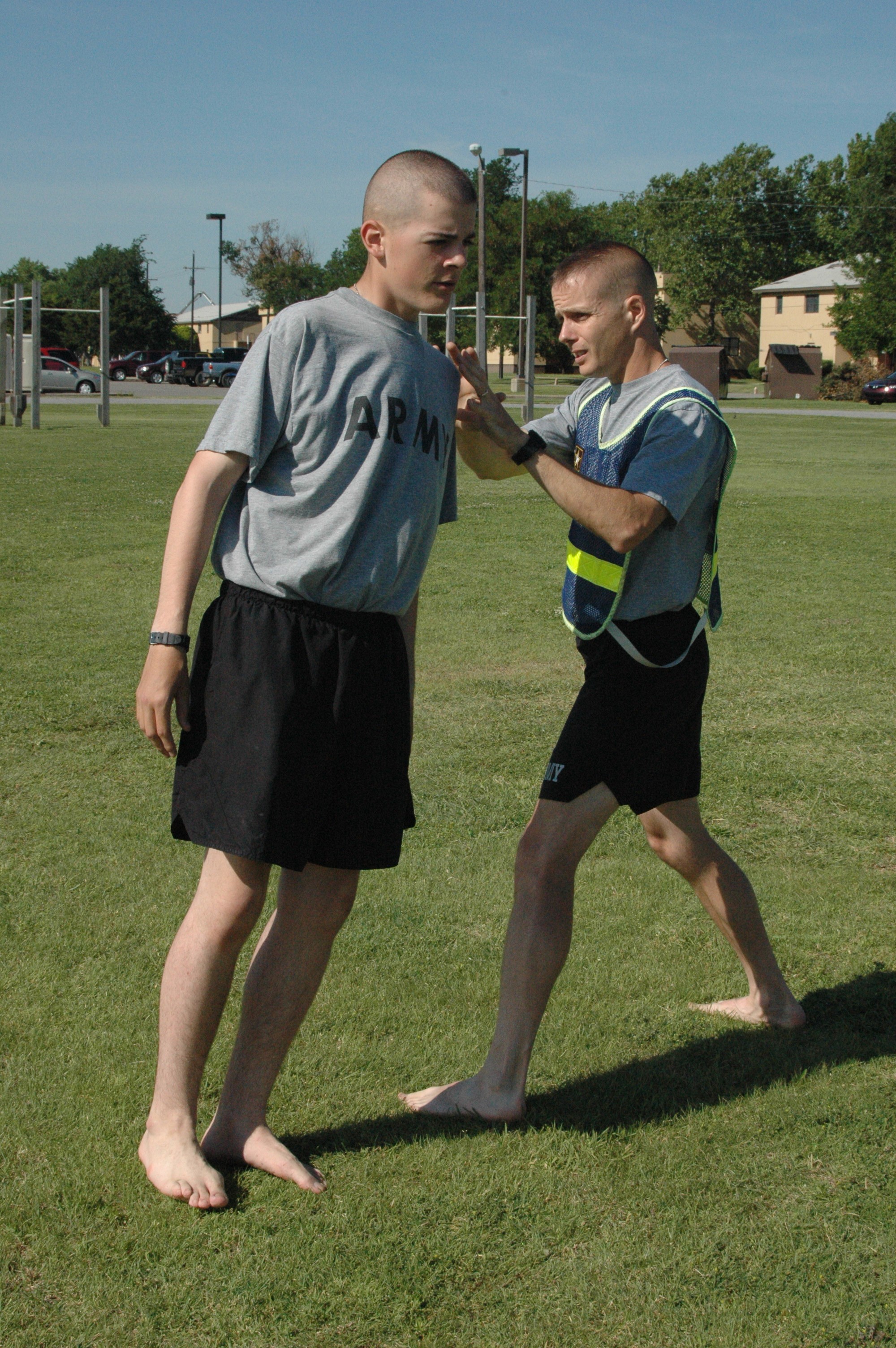"Contrary to what some people believe, running shouldn't be painful," said Capt. Charles Blake, the 434th Field Artillery Brigade surgeon. "If it is, you're doing something wrong."
Blake, who is also a physical therapist, is responsible for the physical training and rehabilitation plans for Soldiers who are injured in Basic Combat Training. He said most of the injuries he treats are the result of improper running.
While he was trying to develop a physical fitness plan that would work for both the Physical Therapy and Rehabilitation Program and the Fitness Training Platoon, he remembered an article he read nine years ago.
Blake revisited the article about a new running style developed by Dr. Nicolas Romanov, a sports scientist and former Olympic running coach. The technique is called Pose Running, and Blake began to study the biomechanics of Romanov's running style.
"It was beautiful, and it made perfect sense," Blake said.
He explained that unlike other sports, technique has not been taught as a running skill. Different people run different ways, but it was never linked to performance until Romanov started conducting his research on the biomechanics of human movement.
Blake worked with people throughout the Fort Sill and found that the most cost-effective way to train leaders on the pose technique was to bring Romanov to Fort Sill. Romanov has conducted five-day Pose Running clinics twice at Fort Sill, and Blake said about 45 drill sergeants, cadre and fires battery personnel are now certified Pose Running coaches. Fort Sill now has the highest concentration of certified Pose Running coaches in the United States.
According to Pose Tech, the company Romanov formed to educate athletes on the Pose Method, "The Running Pose is a whole-body pose (that) vertically aligns the shoulders, hips and ankles with the support leg, while standing on the ball of the foot. This creates an S-like shape of the body. The runner then changes the pose from one leg to the other by falling forward and allowing gravity to do the work. The support foot is pulled from the ground to allow the body to fall forward, while the other foot drops down freely in a change of support. This creates forward movement with the least energy use and the least effort. The end result is faster race times, freer running and (reduced) injuries."
Staff Sgt. John Carroll, a drill sergeant with the Fitness Training Battery and a Pose Running coach, said Romanov based the whole theory on using gravity to propel your body through natural motion.
"You have the initial pose, which is the natural body position," Carroll explained. "Every runner, no matter what style they run in, they will hit that pose at some point in their stride. The goal is to return to pose as quickly as possible. Most people who don't run a lot, they take a long time to return to pose. The second part of the pose is the fall. Basically you are leaned forward and you use gravity to start to propel yourself forward. The final part is the pull. All you're doing is pulling your foot off the ground."
Blake said the injury implications are unlimited.
"Running well is about technique; it's a skilled sport," Blake explained. "There is a clear distinction between good runners and bad runners, and it's all about technique."
The only reason it's hard for someone to learn Pose Running is the incorrect way they have been taught to run, Carroll said.
"If you look at what the running world has taught us for the last 30 years, you look at the running shoes with the giant heels on them and all the different stability and motion control and all that, they taught us to land on our heels," he said. "They've had to put the thick padding on shoes to try to prevent injury. So we're having to take away those bad habits. ... If you see a toddler run or if you see someone running barefoot, they'll run naturally in Pose, because that's the body's natural way to run. If you run barefoot, you can't land on your heels because it hurts."
Pose Running is sacientifically proven to reduce impact on knees by 50 percent. Blake said Pose Running is teaching Soldiers proper running technique, and it gives him a model for injury prevention.
"I can compare how they walk to their injury and figure out how they were injured. Once they correct their technique, they should never have the same problem again."
Not only does Pose running reduce impact on the knees, it improves run times and helps prevent injuries. Soldiers at the Fitness Training Battery are proof of that. Soldiers are trimming their run time by an average of a minute a week at the Fitness Training Platoon.
Before the drill sergeants even start talking to the Soldiers about Pose, they video tape the Soldiers running to see where each Soldier's weaknesses are.
"We have Pose running sheets that we can use to identify what thing they're doing wrong specifically," Carroll explained. "And then from there we'll talk about Pose, the reasons behind it and then go directly into the drills. Once we get into the drills we'll start doing some barefoot running and then from there we'll go back and watch them run again after using the techniques that they've just been taught."
Pose Running has been so successful in increasing run times and reducing injuries that Blake and others from the 434th Field Artillery Brigade collaborated on an executive summary suggesting that the technique be investigated for full potential and teaching at Drill Sergeant School.
Editor's note: The Pose Tech Web site offers free articles and videos at www.posetech.com.


Social Sharing